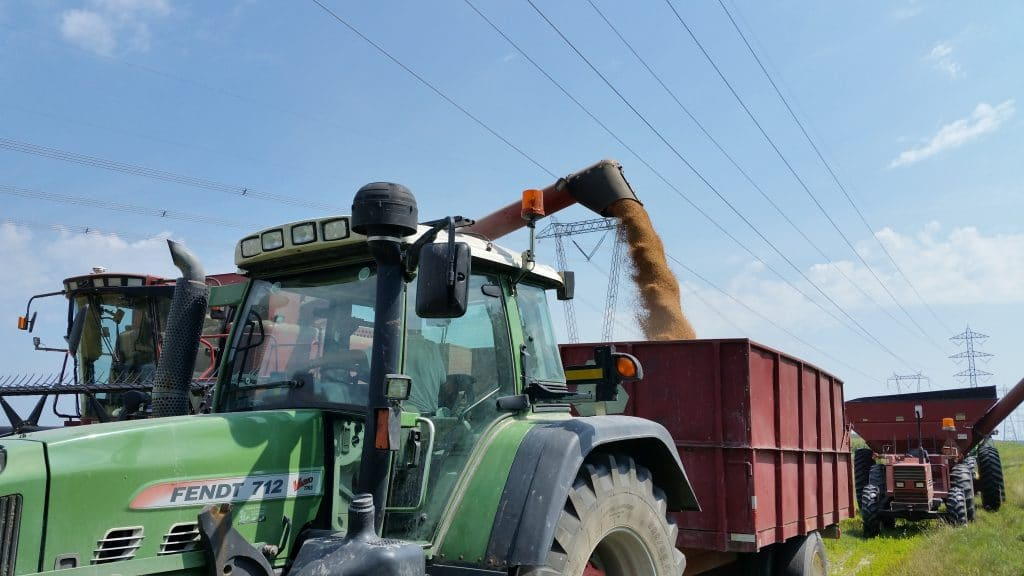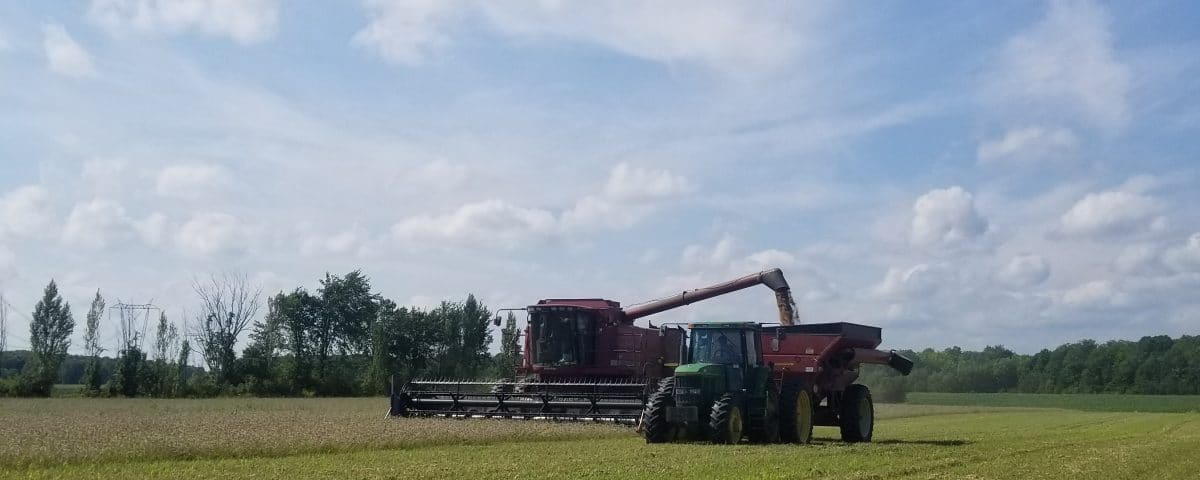- We are closed now (open again on Thursday at 7:00 AM). View our up to date menu.
Farming with Nature
We have re-opened inside!
May 9, 2020Thanksgiving Specials for you to Order!
November 2, 2020
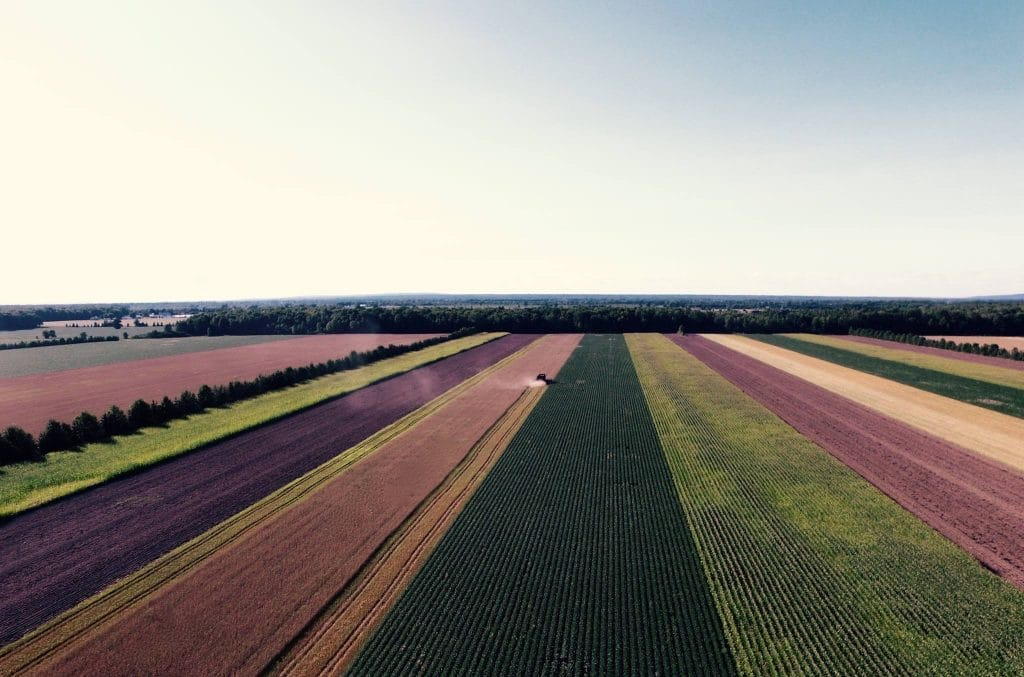
An aerial view of Les Fermes Longpres, Les Cedres, QC. Their various crops are grown in adjacent bands. A plot of wheat is being harvested here.
We are so proud to be able to say that over 95% of all the grain that we use in our breads comes from three farms in the Northeast. Most of the flour that goes into our bread—about 200 tons a year—comes from wheat grown and milled by our friends at Les Fermes Longpres in Les Cedres, QC. This family farm is about 150 miles from us. They have about 1500 acres under cultivation and every year about one third of that is planted in wheat. They have a roller mill on the farm dedicated to milling all of the wheat they grow. Ever since they first started the mill almost 6 years ago, we have purchased a little less than half of the flour they produce each year.
August is harvest time for spring wheat and usually we like to make a trip to the farm to see some of the year’s wheat coming off the field. Of course, this year we can’t cross the border, so they sent us some harvest photos so that we could check in on how our primary ingredient is looking.
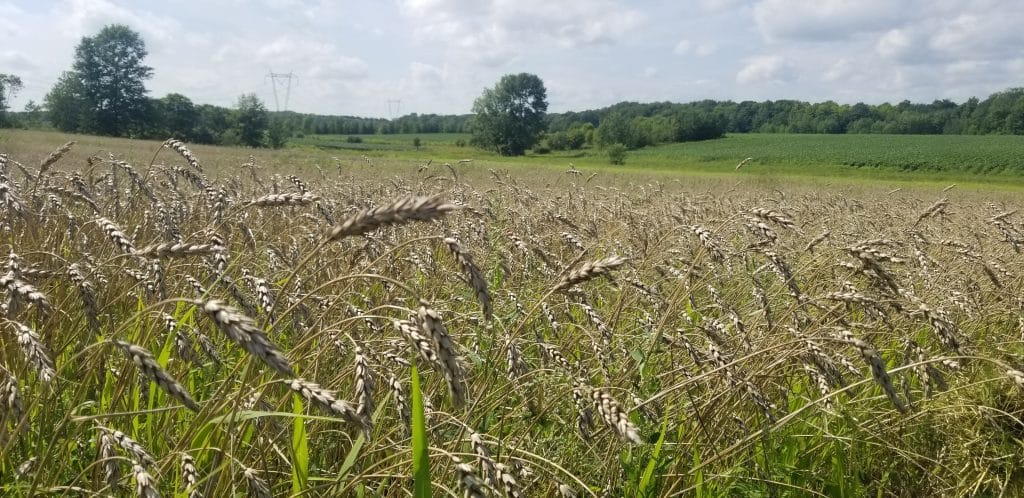
Here is this year’s wheat just before harvest. The Dewavrins have planted trees as windbreaks.
This wheat is ready for harvest, which is exactly what happens next:
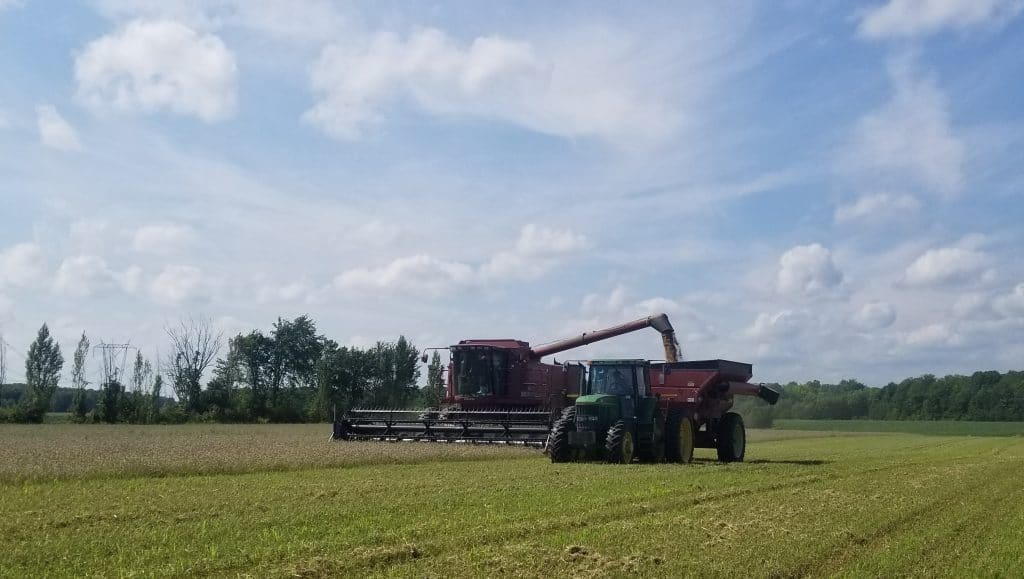
Into the hopper!
The Dewavrin family has been farming organically for over 20 years and they are widely recognized for their innovative practices that enable them to reduce fertilizer inputs, build soil organic matter, and reduce erosion. For their nitrogen needs, they rely mostly on legume cover crops (and one harvested crop—soybeans). All members of the bean and pea family have the unique ability to take nitrogen from the air and “fix” it in the soil through their roots. Nitrogen is an essential nutrient for all crops. Usually it is applied via petroleum-derived chemical fertilizers or manure. Both of these sources, because they are not usually combined with organic material (plant matter), are prone to being washed from the soil with rain and polluting the surrounding water. With their system, the Dewavrins only need to apply a small amount of manure every 3 years. By inter-seeding their wheat crop with alfalfa or clover, they not only take advantage of “free” nitrogen, but they also suppress weeds and add organic matter to the soil when the plant residue is incorporated into the soil.
As the wheat is harvested, the combine chops the straw after separating out the grain:
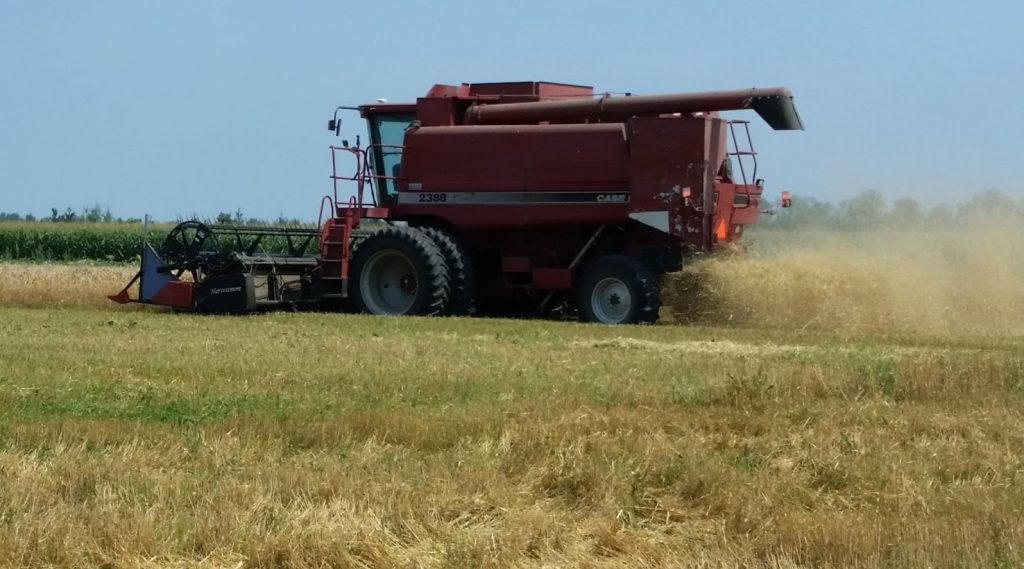
And, in a typical year, a nitrogen-fixing crop of clover or alfalfa is exposed:
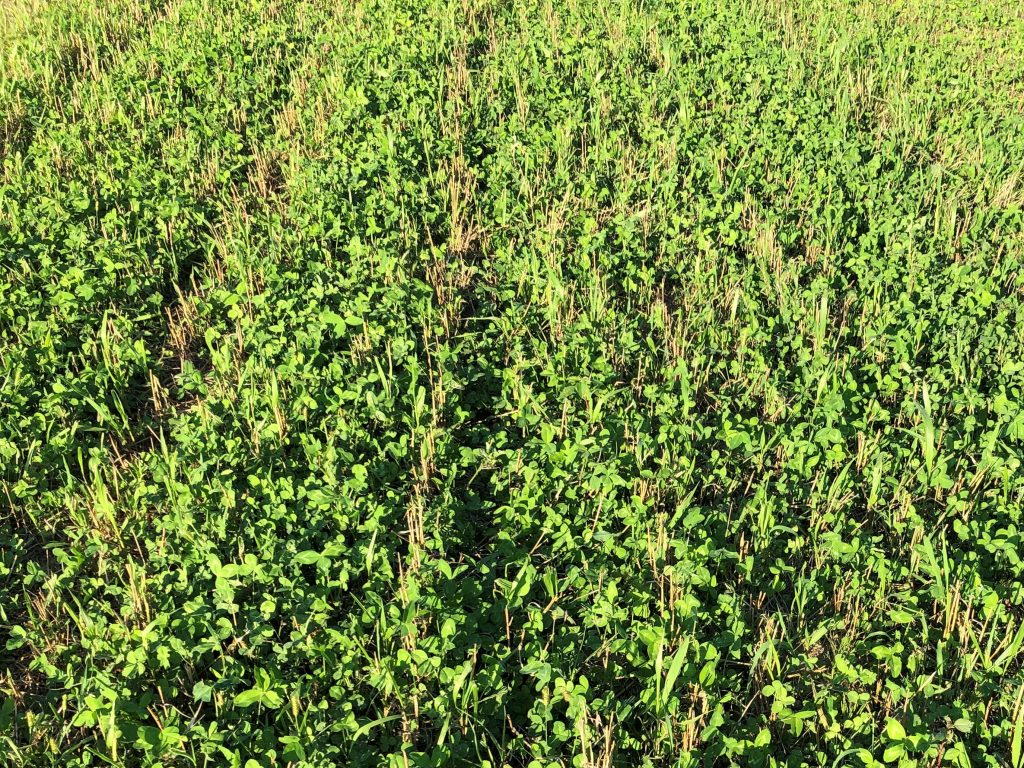
This clover was seeded just a week or so after the wheat was planted. The Dewavrins designed and built an implement that simultaneously weeds between the wheat rows and interseeds the legume. Because there was nothing like this kind of tool on the market, they had to adapt a tine weeder by adding a seeder to it.
Here it is in action in the spring. You can see the hoses that deliver the seeds that are planted right after the tine weeders rake the soil.
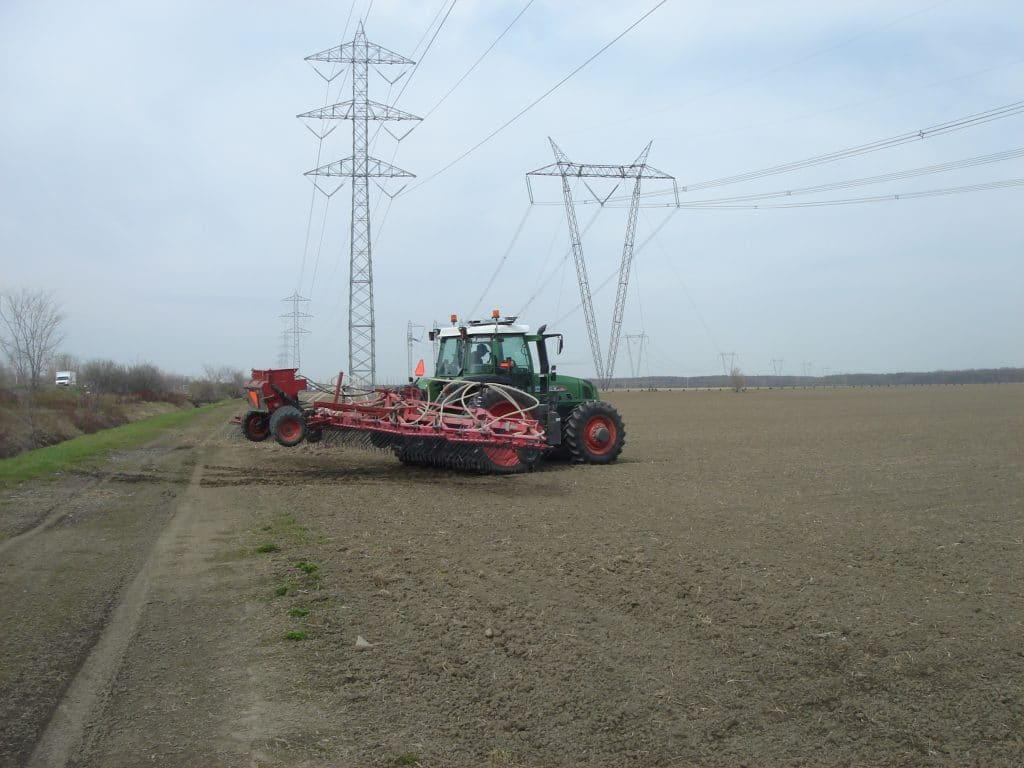
This rig is big: in fact, it’s 15 meters wide! Because of its width and because it weeds and seeds simultaneously, the farmers minimize their passes over the field. The next time they will drive on the field will be for harvest. The only other pass needed during the entire growing season is when the wheat is planted. This saves fuel, reduces soil compaction, naturally suppresses weeds (with the legume)– all while adding nitrogen and organic matter to the soil.
One thing that impresses me about all farmers is that they have to able to adapt to perpetually unpredictable circumstances. As a baker, this adds a level of complexity that I find mind-boggling. At the bakery, we can control nearly everything about our environment so that the microorganisms that we are “farming” (yeast and bacteria) do predictable things. On a farm, your best-laid plans will rarely pan out. It may rain too much or too little or at the wrong time. It may be too hot or too cold. You could get strong winds that threaten to knock your crop over before you can harvest it. The list of things that can go wrong is endless.
The Dewavrins always seem to have about 4 or 5 back-up plans in case things don’t go as they hoped. 2020 was no exception. This year has been very dry. It didn’t start raining until the wheat had matured and the clover mostly failed to thrive. As you can see in the very first photo, this resulted in wheat that didn’t grow very high and weeds that threatened to overtake the wheat. So they are planting field peas after the wheat harvest to give the soil the nitrogen it needs. The 6-8 inches of wheat stubble left after harvest provided just enough material to chop up and leave on the pea seeds as mulch.
This kind of adaptability enables the Dewavrins to go without crop insurance. This year’s wheat yield is lower, but the quality appears to be good. They’ve done it again!
